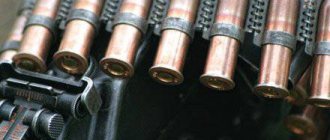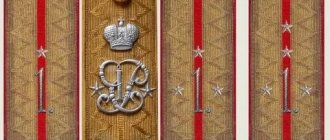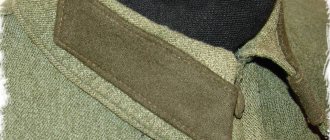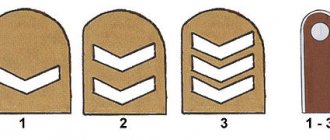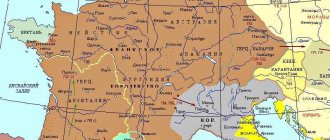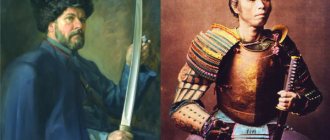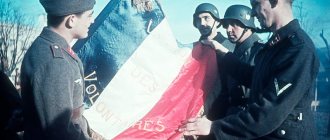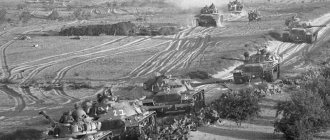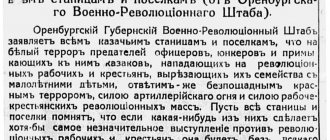SS soldiers: the beginning of the story
It all started in March 1923, when A. Hitler’s personal guard and driver, a watchmaker by profession, Emil Maurice, together with a stationery dealer and part-time political figure in Nazi Germany, Joseph Berchtold, created a headquarters guard in Munich. The main purpose of the newly formed combat formation was to protect the NSDAP Fuhrer Adolf Hitler from possible threats and provocations from other parties and other political formations.
After humble beginnings as a defense unit for the NSDAP leadership, the combat unit grew into the Waffen-SS, an armed defense squadron. The officers and men of the Waffen-SS constituted a formidable fighting force. The total number was more than 950 thousand people, and a total of 38 combat units were formed.
Beer Hall Putsch by A. Hitler and E. Ludendorff
“Bürgerbräukeller” is a beer hall in Munich at Rosenheimerstrasse 15. The area of the drinking establishment could accommodate up to 1830 people. Since the Weimar Republic, thanks to its capacity, the Bürgerbräukeller has become the most popular venue for various events, including political ones.
So, on the night of November 8-9, 1923, an uprising took place in the hall of a drinking establishment, the purpose of which was to overthrow the current government of Germany. The first to speak was A. Hitler's ally in political convictions, Erich Friedrich Wilhelm Ludendorff, outlining the general goals and objectives of this gathering. The main organizer and ideological inspirer of the event was Adolf Hitler, the leader of the NSDAP, a young Nazi party. In his indictment, he called for the ruthless destruction of all enemies of his National Socialist Party.
The SS soldiers, led at that time by the treasurer and close friend of the Fuhrer J. Berchtold, undertook to ensure the safety of the Beer Hall Putsch - this is how this political event went down in history. However, the German authorities reacted in time to this gathering of Nazis and took all measures to eliminate them. Adolf Hitler was convicted and imprisoned, and the NSDAP party was banned in Germany. Naturally, the need for the protective functions of the newly created paramilitary guard also disappeared. The SS soldiers (photo presented in the article), as a combat formation of the “Shock Detachment”, were disbanded.
Formation and activity
As mentioned above, initially the SS was just the personal guard of the Fuhrer and some other high-ranking party members. However, gradually this organization began to expand, and the first signal foreshadowing its future power was the introduction of a special SS rank. We are talking about the position of Reichsfuhrer, then simply the chief of all SS Fuhrers.
The second important moment in the rise of the organization was permission to patrol the streets along with the police. This made the SS members no longer just guards. The organization has turned into a full-fledged law enforcement service.
However, at that time, the military ranks of the SS and the Wehrmacht were still considered equivalent. The main event in the formation of the organization can be called, of course, the accession to the post of Reichsführer Heinrich Himmler. It was he who, while simultaneously serving as head of the SA, issued a decree that did not allow any of the military to give orders to members of the SS.
At that time, in the German army, this decision, understandably, was accepted with hostility. Moreover, along with this, a decree was immediately issued that demanded that all the best soldiers be placed at the disposal of the SS. In fact, Hitler and his closest associates pulled off a brilliant scam.
Indeed, among the military class, the number of adherents of the National Socialist labor movement was minimal, and therefore the heads of the party seizing power understood the threat posed by the army. They needed firm confidence that there were people who would take up arms on the orders of the Fuhrer and would be ready to die while carrying out the tasks assigned to him. Therefore, Himmler actually created a personal army for the Nazis.
The restless Fuhrer
Released from prison in April 1925, Adolf Hitler orders his fellow party member and bodyguard Yu. Schreck to form a personal guard. Preference was given to former fighters of the Shock Squad. Having gathered eight people, Yu. Shrek creates a defense team. By the end of 1925, the total strength of the combat formation was about a thousand people. From now on they were given the name “SS soldiers of the National Socialist German Workers' Party.”
Not everyone could join the SS NSDAP organization. Strict conditions were imposed on candidates for this “honorary” position:
- age from 25 to 35 years;
- living in the area for at least 5 years;
- the presence of two guarantors from among the party members;
- good health;
- discipline;
- sanity.
In addition, in order to become a party member and, accordingly, an SS soldier, the candidate had to confirm his belonging to the superior Aryan race. These were the official rules of the SS (Schutzstaffel).
Form
Initially, when the SS first appeared, the “security squad” could be distinguished from an ordinary party member by their ties: they were black, not brown. However, due to the “elitism”, the requirements for appearance and standing out from the crowd increased more and more.
With the arrival of Himmler, black became the main color of the organization - the Nazis wore caps, shirts, and uniforms of this color. To these were added stripes with runic symbols and a “death’s head”.
However, since Germany entered the war, black was found to be extremely conspicuous on the battlefield, so military gray uniforms were introduced. It did not differ in anything except color, and was of the same strict style. Gradually, gray tones completely replaced black. The black uniform was considered purely ceremonial.
Education and training
SS soldiers had to undergo appropriate combat training, which was carried out in several stages and lasted for three months. The main objectives of the intensive training of recruits were:
- excellent physical fitness;
- knowledge of small arms and impeccable possession of them;
- political indoctrination.
The training in the art of war was so intense that only one out of three people could complete the entire distance. After the basic training course, recruits were sent to specialized schools, where they received additional education appropriate to the chosen branch of the military.
Further training in military wisdom in the army was based not only on the specialization of the branch of service, but also on mutual trust and respect between candidates for officer or soldier. This is how the Wehrmacht soldiers differed from the SS soldiers, where strict discipline and a strict policy of separation between officers and privates were at the forefront.
"Galicia" and "Rhone"
The Galicia division also occupies a special place in the history of the SS. This unit was created from volunteers from Western Ukraine. The motives of people from Galicia who received German SS ranks were simple - the Bolsheviks came to their land just a few years ago and managed to repress a considerable number of people. They joined this division not out of ideological similarity with the Nazis, but for the sake of the war against the communists, whom many Western Ukrainians perceived in the same way as citizens of the USSR perceived the German invaders, i.e., as punitive and murderers. Many went there out of a thirst for revenge. In short, the Germans were looked upon as liberators from the Bolshevik yoke.
This view was typical not only of residents of Western Ukraine. The 29th Division "RONA" gave SS ranks and shoulder straps to Russians who had previously tried to gain independence from the communists. They got there for the same reasons as the Ukrainians - a thirst for revenge and independence. For many people, joining the ranks of the SS seemed like a real salvation after a life broken by the 30s under Stalin.
At the end of the war, Hitler and his allies went to extremes just to keep people associated with the SS on the battlefield. They began to recruit literally boys into the army. A striking example of this is the Hitler Youth division.
In addition, on paper there are many units that were never created, for example, the one that was supposed to become Muslim (!). Even blacks sometimes ended up in the ranks of the SS. Old photographs testify to this.
Of course, when it came to this, all elitism disappeared, and the SS became simply an organization under the leadership of the Nazi elite. The recruitment of “imperfect” soldiers only shows how desperate Hitler and Himmler were at the end of the war.
New chief of the combat unit
Adolf Hitler attached special importance to the newly created own troops, which were distinguished by their impeccable devotion and loyalty to their Fuhrer. The main dream of the leader of Nazi Germany was to create an elite formation capable of performing any tasks that the National Socialist Party set for them. This required a leader who could handle this task. So, in January 1929, on the recommendation of A. Hitler, Heinrich Luitpold Himmler, one of A. Hitler’s loyal assistants in the Third Reich, became Reichsführer SS. The personal personnel number of the new SS chief is 168.
The new boss began his work as the head of an elite division by tightening personnel policies. Having developed new requirements for personnel, G. Himmler cleared the ranks of the combat formation by half. The Reichsführer SS personally spent hours studying photographs of SS members and candidates, finding flaws in their “racial purity.” However, soon the number of SS soldiers and officers increased noticeably, increasing almost 10 times. The SS chief achieved such success in two years.
Thanks to this, the prestige of the SS troops increased significantly. It is G. Himmler who is credited with the authorship of the famous gesture, familiar to everyone from films about the Great Patriotic War - “Heil Hitler”, with the raising of the straightened right arm at an angle of 45º. In addition, thanks to the Reichsführer, the uniform of Wehrmacht soldiers (including the SS) was modernized, which lasted until the fall of Nazi Germany in May 1945.
Divisions
The most famous and ominous is, of course, the 3rd Tank Division “Totenkopf”. Many times she completely disappeared, being destroyed. However, it was revived again and again. However, the division gained fame not because of this, and not because of any successful military operations. “The Death’s Head” is, first of all, an incredible amount of blood on the hands of military personnel. It is this division that accounts for the largest number of crimes against both the civilian population and prisoners of war. Rank and title in the SS did not play any role during the tribunal, since almost every member of this unit managed to “distinguish themselves.”
The second most legendary was the Viking division, recruited, according to the Nazi formulation, “from peoples close in blood and spirit.” Volunteers from Scandinavian countries entered there, although their number was not overwhelming. Basically, only Germans still held SS ranks. However, a precedent was created, because Viking became the first division to recruit foreigners. For a long time they fought in the south of the USSR, the main place of their “exploits” was Ukraine.
Fuhrer's order
The authority of the Schutzstaffel (SS) increased significantly thanks to the personal order of the Fuhrer. The published order stated that no one had the right to give orders to SS soldiers and officers except their immediate superiors. In addition, it was recommended that all SA units, the assault troops known as the “Brown Shirts,” assist in every possible way in staffing the SS Army, supplying the latter with their best soldiers.
Uniforms of the SS troops
From now on, the uniform of an SS soldier was noticeably different from the clothing of the assault troops (SA), the security service (SD) and other combined arms units of the Third Reich. A distinctive feature of the SS military uniform was:
- black jacket and black trousers;
- White shirt;
- black cap and black tie.
In addition, on the left sleeve of the jacket and/or shirt there was now a digital abbreviation indicating belonging to one or another standard of the SS troops. With the outbreak of hostilities in Europe in 1939, the uniform of SS soldiers began to change. Strict implementation of G. Himmler’s order on a single black and white uniform color, which distinguished the soldiers of A. Hitler’s personal army from the combined arms color of other Nazi formations, was somewhat relaxed.
The party factory for sewing military uniforms, due to its enormous workload, was not able to provide uniforms to all SS units. The military personnel were asked to alter the Schutzstaffel insignia from the Wehrmacht combined arms uniform.
Army of the future: SS troops and special forces
Soldiers of the SS division "Totenkopf" in the USSR in 1941
Innovators
The French placed their main bet on the Maginot Line, a powerful line of fortifications on the border with Germany.
The French generals assumed that the Germans would not be able to overcome it, at which time France would mobilize all its forces, receive help from England, and positional warfare would begin again, as during the First World War. The Nazis beat the enemy's headquarters with a blitzkrieg strategy, mobile formations simply bypassed the enemy's strongest fortified areas, broke through to the rear, causing a wave of panic and horror. As a result, the French garrisons surrendered deep in the rear of the German army, or the fighting took place far away from the French strongholds. Before the Wehrmacht invasion, the Russians had almost no experience fighting a modern, high-tech enemy. During the Civil War they fought against their own people, there were few planes and tanks, the cavalry played the main role in the offensive and breakthroughs at the front. The war with Poland was also fought and ended in defeat. In the operation on the Chinese Eastern Railway in 1929, we had to deal with weak Chinese troops. In Spain there was a serious enemy - Italians and Germans, but not the entire army was tested there, but only groups of military experts. The conflict at Lake Khasan with the Japanese was minor.
Only at Khalkhin Gol in the summer of 1939 did Soviet (Russian) troops encounter a modern army that had a lot of aircraft, armored vehicles and artillery. The Japanese army was well trained, disciplined, and had extensive military experience. The Japanese in the Mongolian steppes were completely defeated, and as a result, the Japanese ruling elite decided that they must first solve the problem of defeating the enemy and seizing resources in the southern seas, and only then go to beat the northern barbarians.
Khalkhin Gol made Soviet generals self-confident. Like, “the armor is strong, and our tanks are fast.” Everyone believed that we would defeat the enemy on his territory, and victory would be won with little bloodshed.
Although already in the battle with the Japanese army, the mistakes of the Red Army were noted: the Japanese at first dominated the skies and calmly bombed our troops; management of the battle on our part was unsatisfactory, cooperation was not established; arriving troops and reserves were thrown into battle in parts; the mistakes of some led to unjustified losses of others (the heroism of some was a consequence of the negligence and stupidity of others). Obviously, the Wehrmacht would not forgive the Russians for such mistakes.
This is what happened during the harsh months of 1941–1942.
The war with Finland made its own adjustments. However, the enemy was defeated, and the strategic task of strengthening the defense of the northwestern part of the country and Leningrad was solved. Therefore, the overestimation of one’s strength remained.
Thus, the Westerners, that the Russians fought according to the old schemes, believed in the “Maginot, Molotov and Stalin lines”, in the number of tanks and aircraft. The Germans punished us severely for this. We were shown a new war, fast-paced, with excellent interaction between armored forces, aviation, artillery, reconnaissance and special forces.
German paratroopers unload a BMW R-12 motorcycle from a Junkers Ju 52 transport aircraft in Crete. May 1941
Wehrmacht fighters
Since the 1920s, the Germans abandoned traditional methods of training soldiers and did not torment them with marching, drills and kitchen assignments.
Therefore, Hitler’s army was qualitatively different for the better even from the Kaiser’s army, which was very good and powerful. It was imbued with the philosophy of invincibility and self-confidence, which was proven in the Polish, Norwegian, French, Yugoslav and other campaigns. Swift and victorious. The army was confident in its strength, commanders, generals. The soldiers had comfortable uniforms and equipment. Wehrmacht soldiers were trained to fight; they were not peacetime soldiers, but fighters. They were given as many bullets as they wanted to shoot. We learned to drive motorcycles, cars, and armored personnel carriers. Handle the walkie-talkie. That is, what was taught in other armies only in special, special units.
The secret of the German lightning war is the excellent interaction of different types of troops. German veterans more than once praised the Luftwaffe in their memoirs. They cleared the way for tanks and infantry at the beginning of the war, smashing defensive positions and enemy columns trying to counterattack or retreat to new positions. The German Air Force remained operational until the very end of the war, supporting and saving its infantry. All this is the result of exercises in peacetime!
German paratroopers and a group of captured British soldiers on Crete. May 1941
Elite - SS troops
The Wehrmacht was not enough for Hitler.
He created a “reserve army” - the SS troops. First as “security detachments” (German SS, abbreviation from German Schutzstaffeln “security detachments”), then as a full-fledged, selected army.
One of the founders and leaders of the SS troops, General Paul Hausser (Gausser), prepared his troops for quick attacks. This approach, according to Hausser’s assistant, Colonel Felix Steiner, requires “a flexible, adaptable type of soldier, physically strong, with increased endurance.”
Most of the candidates who entered the cadet schools had already been selected for the SA, SS or Gestapo, and were recommended by their commanders. First, the cadets learned to wield weapons, underwent physical training (obstacle course), etc. Then they studied at a higher level, including field communications, interaction between infantry and artillery, landings on enemy shores, and acquired the ability to command small units. The goal was to train independent, proactive leaders, the future elite of the Third (World) Reich.
Thus, the SS troops solved two main tasks.
Next to the previous army, a new one was created, even more modernized, with increased mobility and combat effectiveness, personally devoted to the Fuhrer, ready to carry out any order and die for the leader.
At the same time, an alternative mechanism for the formation of the Reich elite was created. The bravest people, loyal to the idea and the Fuhrer, moved to the top, regardless of origin. Thanks to the SS, not only people from the aristocracy, the Prussian “military bone”, the propertied classes, but also the children of workers, peasants and employees could become masters and officers of the new German Empire. The influx of “fresh blood” is a very good remedy for the decay of the elite.
Since 1934, cadet cadets began to be selected for the first SS officer school at Bad Tölz Castle in the Bavarian Alps. Future SS commanders, the elite of the Reich, were greeted not by dull barracks, but by the most beautiful places in Europe. Physical development went in parallel with intellectual and aesthetic development. The cadets studied ideology, music, and aristocratic etiquette. They were intensely involved in athletics and going out into the field. The castle had a football stadium, athletics grounds, halls for boxing, gymnastics, fencing, a swimming pool and a sauna. Physical culture developed courage, strength, agility, discipline, independence, aggressiveness (militancy) and team spirit. Personnel capable of leading others were forged here. Subsequently, such SS schools appeared in other places.
“Dad” of the SS troops, commander of the SS division “Das Reich” SS Gruppenführer Paul Hausser (1880–1972)
Fast, mobile and powerful
General Hausser and his assistant Steiner were not pure theorists.
They had experience of the First World War and the creation of assault groups. Steiner commanded assault groups and even then developed a methodology for training personnel, which later became a model for all SS troops. Based on his military experience, Steiner developed a concept for the development of the armed forces of the future. He believed that the war of the future would be completely different from the First World War. This will be a fast and fleeting war, where everything will be decided by the speed of action, communications, technical equipment and professionalism of the soldiers. The main role will be played not by multimillion-dollar armies, but by small, mobile, well-armed and specially trained strike units. With quick strikes they will break through the enemy’s defenses, block them and destroy them.
In 1936, Steiner led the SS Deutschland regiment and began to put his theory into practice. He created mobile combat groups, armed them with submachine guns (machine guns), and supplied them with a large number of grenades. This increased the firepower of the unit.
SS soldiers received colorful camouflage suits, which were not available in the Wehrmacht, for which they received the nickname “tree frogs.” The SS troops did not strengthen the differences between soldiers, non-commissioned officers and officers, but maintained iron discipline. It was in the SS troops that junior ranks addressed senior ranks only by rank, without adding, as in the army, the word “Mr.” This gave an excellent result; a military brotherhood was created. The first SS divisions were distinguished by their high cohesion and combat effectiveness. Steiner later commanded the SS Viking Division, 3rd SS Panzer Corps.
During World War II, Hausser commanded the 2nd SS Panzer Division "Reich", then received command of the 2nd SS Panzer Corps, consisting of three SS tank divisions - "Leibstandarte SS Adolf Hitler", "Reich" and "Totenkopf". In 1944, he commanded the 7th Army, Army Groups "Haut Rhine" and "G" on the Western Front.
Thus, the SS troops could become the army of the future “eternal Reich”. Their training system is similar to the training of modern special operations forces. At the same time, the Germans created the SS troops before special forces began to be formed in other countries.
Officers of the 5th SS Wiking Panzer Division in an armored communications vehicle during fighting near the village of Wilanowo in eastern Poland. 1944
Reich saboteurs and special forces
The Germans were ahead of the whole world in creating special forces and sabotage groups.
They were the first to discard the old “knightly” rules of war and combine intelligence with special forces. Today, special forces are an integral part of the armed forces. But at the beginning of World War II, everything was different; sabotage was considered an undignified, uncivilized method of war.
In Britain, the Special Operations Directorate was created in 1940. At that time, special purpose shares were called “irregular”. Initiative and planning were the responsibility of the intelligence chiefs of the Navy, Army, and Special Intelligence Service. However, obtaining permission for such operations was difficult. The top leadership of Britain enjoyed the fruits of such operations, but was in no hurry to take responsibility for them. Even Churchill resorted to such special operations only as a last resort, often encountering opposition from the Foreign Ministry and the Treasury. It was also necessary to obtain permission from the naval command, and admirals were always afraid of responsibility.
As a result, the British were well behind the Germans in this area.
The Nazis created the secret directorate Abwehr 2 in 1938.
The Abwehr trained saboteurs to be deployed behind enemy lines, planned and carried out terrorist attacks and sabotage, and trained rebels to operate behind enemy lines. Units were also formed that recruited Volksdeutsche - ethnic Germans who were born and raised abroad and representatives of national minorities. For example, Western Ukrainian nationalists.
The Abwehr trained future militant rebels, the “fifth column” behind enemy lines. German saboteurs performed well in the Polish campaign in 1939. In 1940, the special regiment “Brandenburg” was created. The special forces of the regiment, which was then deployed into a division, during 1940–1944 took part in sabotage and reconnaissance operations on almost all fronts. Overall the operations were successful.
Thus, the Nazis were ahead of the whole world in creating full-fledged special forces and thereby gained a great advantage over their opponents.
German tank crews near Pz tanks. Kpfw. V Ausf. A “Panther” from the SS “Wiking” division at a training ground in Poland. 1944
Soviet Russia
It is worth noting that the Soviet Union, which had extensive experience in irregular, partisan warfare during the Troubles of 1917–1921, could well have been ahead of Germany in this matter.
Until the end of the 30s, we had sabotage and partisan detachments in the western border districts, aimed at partisan activities behind enemy lines who had invaded our lands. It was absolutely determined that the best targets for attacks by flying partisan detachments were communication routes for the enemy army and fuel depots. Special forces partisans were trained very well: topography, explosives, car driving, parachuting, small group tactics, etc. Weapons, ammunition, explosives, and equipment were placed in caches. They also trained saboteur-paratroopers for deployment behind enemy lines. It was planned to create special forces under Soviet intelligence.
That is, Russia was objectively ahead of the Germans in creating special forces, while the British, Americans and French were generally far behind in this important matter.
However, in 1937–1938, partisan sabotage detachments and groups were disbanded, hiding places and caches were liquidated, and many experienced personnel were repressed.
The fact is that there was a struggle for power. Stalin eliminated the “fifth column”, the Trotskyists (How Stalin defeated the “fifth column” and saved the people from defeat in the Great Patriotic War). Obviously, there were conspirators among the military elite. The fall of every Trotskyist and revolutionary internationalist was accompanied by a purge of his entourage and team.
The rink of repression also took place in special units, since their command cadres were selected and placed by the former military elite. And the special units seemed to be a very dangerous tool, suitable for a military coup.
In addition, a new military doctrine was adopted - a war with little blood on foreign territory. The focus is on large mechanized, aviation and airborne formations. Guerrilla and sabotage actions on their territory were not envisaged. The idea of special forces participating in the offensive was not reached.
True, the war with Finland already showed the vital need for special forces. Volunteers began to create ski units that carried out raids on Finnish rear areas and fought against “cuckoos.” In 1940, an old military expert, a participant in the war in Spain, Hadji Mansurov, proposed creating special units in the army, in each district. His sensible proposal was not supported.
Only the head of the NKVD, Lavrentiy Beria, moved the matter forward. This man generally did a lot for the Motherland, but, unfortunately, was completely denigrated and demonized (The Black Myth of the “Bloody Executioner” Beria; Part 2). Just before the war, in June 1941, Beria ordered the creation of a reconnaissance and sabotage apparatus. We entrusted this case to our intelligence star Pavel Sudoplatov.
Thus, thanks to various “perestroikas,” at the beginning of the war we did not have a single special forces. And the Germans, showing intelligence and resourcefulness, used our and their experience (partisans in Africa during the First World War), created the troops of the future, special forces, special operations forces.
Military ranks of the SS troops
As in any military unit, the SS Army had its own hierarchy in military ranks. Below is a comparative table of the equivalent military ranks of military personnel of the Soviet Army, Wehrmacht and SS troops.
| Red Army | Ground forces of the Third Reich | SS troops |
| Red Army soldier | Private, rifleman | Mann SS |
| Corporal | Chief Grenadier | Rottenführer SS |
| Lance Sergeant | Non-commissioned officer | SS Unterscharführer |
| Sergeant | Non-commissioned sergeant major | Scharführer SS |
| Staff Sergeant | Sergeant Major | SS Oberscharführer |
| Sergeant Major | Chief Sergeant Major | SS Hauptscharführer |
| Ensign | — | — |
| Lieutenant | Lieutenant | SS Untersturmführer |
| Senior Lieutenant | Chief Lieutenant | SS Obersturmführer |
| Captain | Captain/Hauptmann | SS Hauptsturmführer |
| Major | Major | SS Sturmbannführer |
| Lieutenant colonel | Oberst-lieutenant | SS Obersturmbannführer |
| Colonel | Oberst | Standartenführer SS |
| Major General | Major General | SS Brigadeführer |
| Lieutenant General | Lieutenant General | SS Gruppenführer |
| Colonel General | General of the troops | SS Oberstgruppenführer |
| Army General | Field Marshal General | SS Oberstgruppenführer |
The highest military rank in Adolf Hitler's elite army was Reichsführer SS, which until May 23, 1945, was held by Heinrich Himmler, equivalent to Marshal of the Soviet Union in the Red Army.
Ranks
The military ranks of the SS Troops were almost completely similar to the ranks of the Wehrmacht.
The youngest of all was a private, who was called a Schütze. Above him stood the equivalent of a corporal - a Sturmmann. So the ranks rose to officer untersturmführer (lieutenant), continuing to remain modified simple army ranks. They walked in this order: Rottenführer, Scharführer, Oberscharführer, Hauptscharführer and Sturmscharführer.
After this, the officers began their work. The highest ranks were general (Obergruppenführer) of the military branch and colonel general, called Oberstgruppenführer.
All of them were subordinate to the commander-in-chief and head of the SS - the Reichsfuehrer. There is nothing complicated in the structure of SS ranks, except perhaps the pronunciation. However, this system is built logically and in an army-like manner, especially if you add up the ranks and structure of the SS in your head - then everything generally becomes quite simple to understand and remember.
Awards and insignia in the SS
Soldiers and officers of the elite unit of the SS troops could be awarded orders, medals and other insignia, just like military personnel of other military formations of the army of Nazi Germany. There were only a small number of distinctive awards that were developed specifically for the “favorites” of the Fuhrer. These included medals for 4- and 8-year service in Adolf Hitler's elite unit, as well as a special cross with a swastika, which was awarded to SS men for 12 and 25 years of dedicated service to their Fuhrer.
Faithful sons of their Fuhrer
Recollection of an SS soldier: “Our guiding principles were duty, loyalty and honor. Defense of the Fatherland and a sense of camaraderie are the main qualities that we cultivated in ourselves. We were forced to kill everyone who was in front of the barrel of our weapons. A feeling of pity should not stop a soldier of great Germany, either in front of a woman begging for mercy, or in front of children's eyes. We were taught the motto: “Accept death and bear death.” Death should become commonplace. Each soldier understood that by sacrificing himself, he thereby helped great Germany in the fight against the common enemy, communism. We considered ourselves warriors for the future of the world, Hitler’s elite.”
These words belong to one of the soldiers of the former Third Reich, private SS infantry unit Gustav Franke, who miraculously survived the Battle of Stalingrad and was captured by the Russians. Were these words of repentance or the simple youthful bravado of a twenty-year-old Nazi? Today it is difficult to judge this.
Trial of collaborators of Nazi Germany
At the Nuremberg trials, officers and soldiers of the Wehrmacht and SS were convicted as members of a criminal organization, so veterans of the mentioned military formations were deprived of many of the rights enjoyed by their other compatriots who had gone through combat operations.
However, German SS soldiers, whose age at the end of World War II did not exceed 18 years, were exempt from conviction and completely acquitted due to the minority of the conscript.
It is worth noting that today the training system for Waffen-SS soldiers has been adopted by the modern army of some European countries and the United States of America.
Selection
To get into the SS party organization, one had to meet many requirements and parameters. First of all, SS ranks were given to men with an absolutely Aryan appearance. Their age at the time of joining the organization should have been 20-25 years. They were required to have the “correct” structure of the skull and absolutely healthy white teeth. Most often, joining the SS ended the “service” in the Hitler Youth.
Appearance was one of the most important selection parameters, since people who were members of the Nazi organization were destined to become the elite of the future German society, “equals among unequals.” It is clear that the most important criterion was endless devotion to the Fuhrer and the ideals of National Socialism.
However, such an ideology did not last long, or rather, it almost completely collapsed with the advent of the Waffen-SS. During the Second World War, Hitler and Himmler began to recruit everyone who showed desire and proved loyalty into the personal army. Of course, they tried to preserve the prestige of the organization by assigning only SS ranks to newly recruited foreigners and not accepting them into the main cell. After serving in the army, such individuals were supposed to receive German citizenship.
In general, the “elite Aryans” very quickly “ended up” during the war, being killed on the battlefield and taken prisoner. Only the first four divisions were completely “staffed” by pure race, among which, by the way, was the legendary “Death’s Head”. However, already the 5th (“Viking”) made it possible for foreigners to receive SS ranks.
